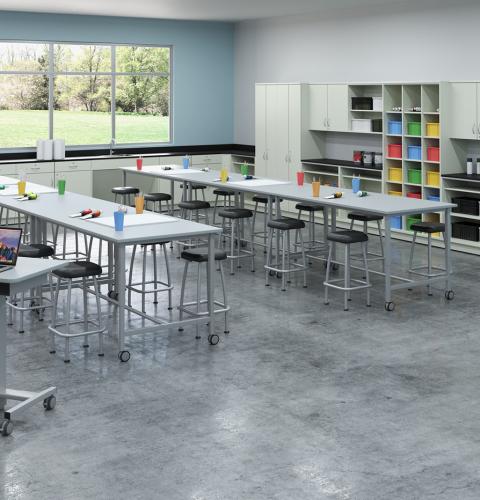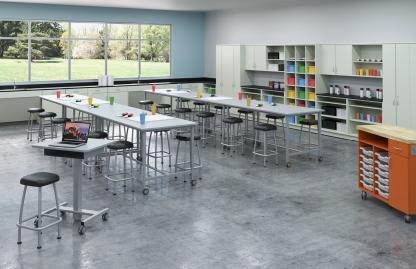
Teaching Method
Demonstrate
Student Behavior
Alone
Space
Combination
Info-Medium
Mixed Technology
Insights for Art Rooms
Enrich students’ creative thinking skills through an environment that empowers problem-solving. Stools allow unrestricted freedom of movement so students can approach projects from any perspective. Generous perimeter storage offers a convenient access point for tools and materials, while mobile storage doubles as a worksurface when inspiration suddenly strikes.
